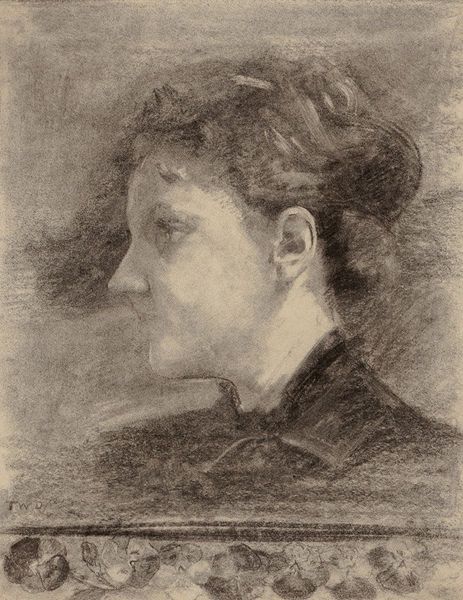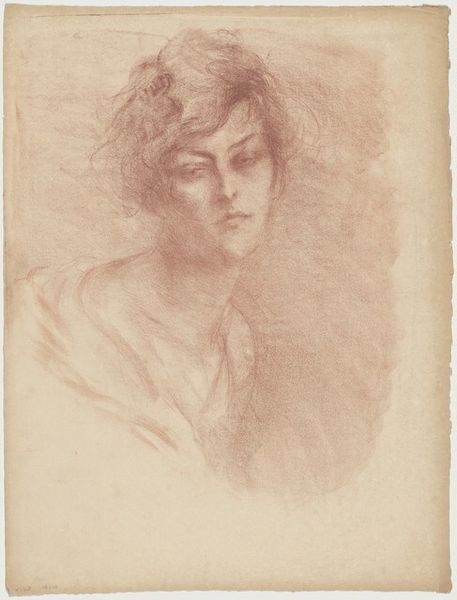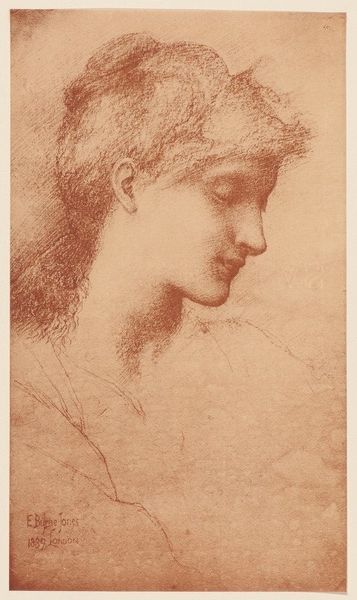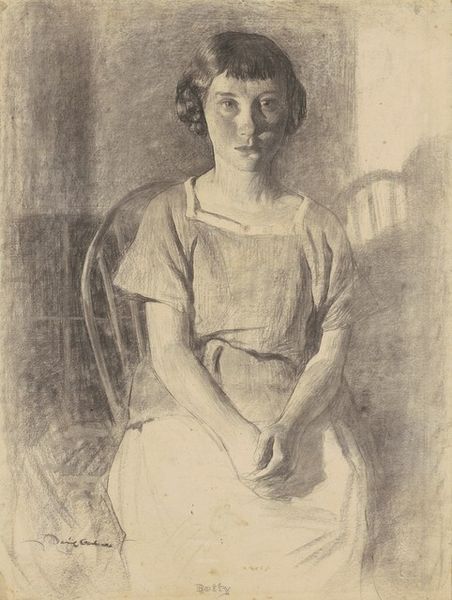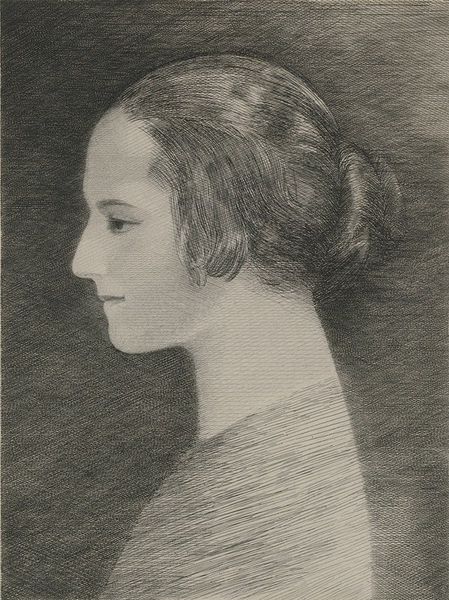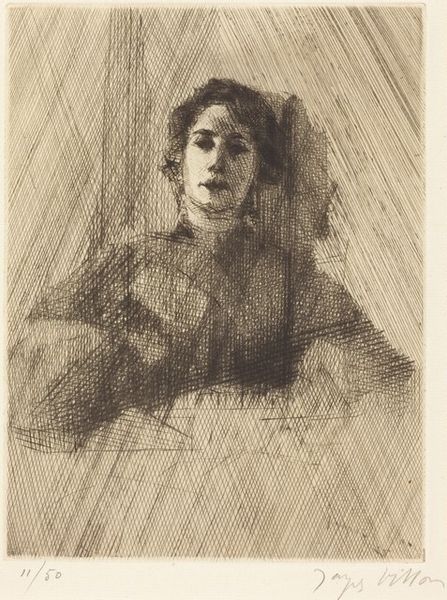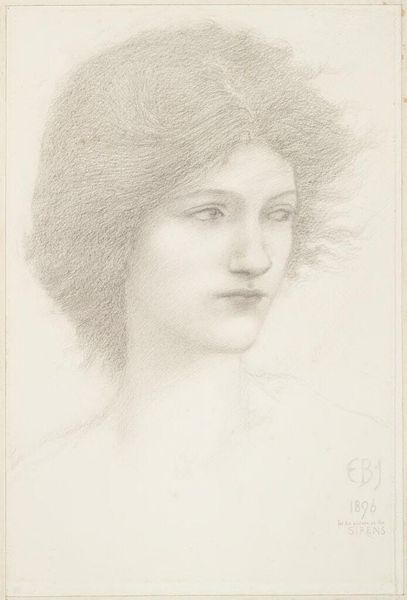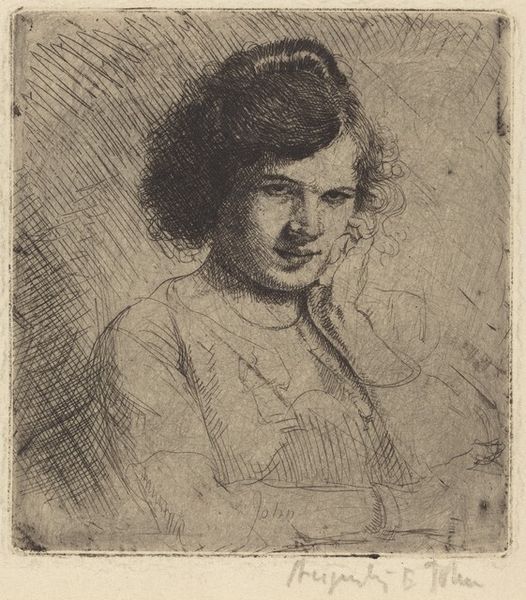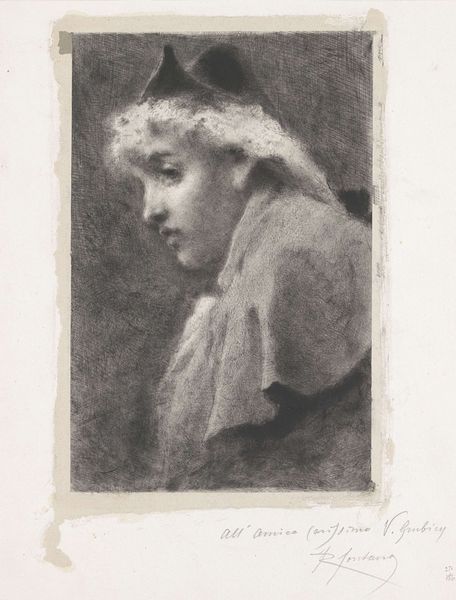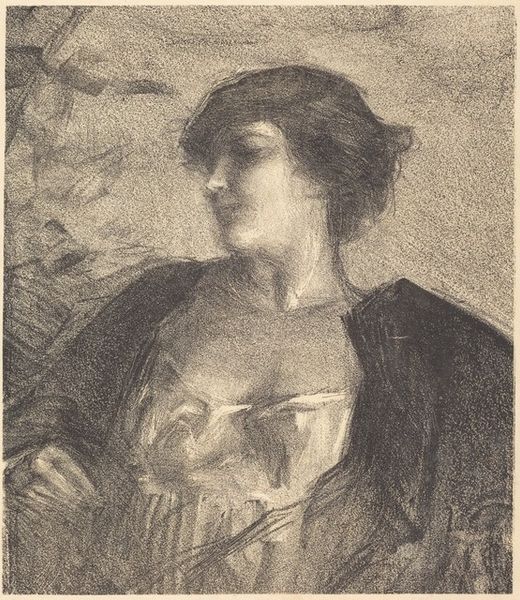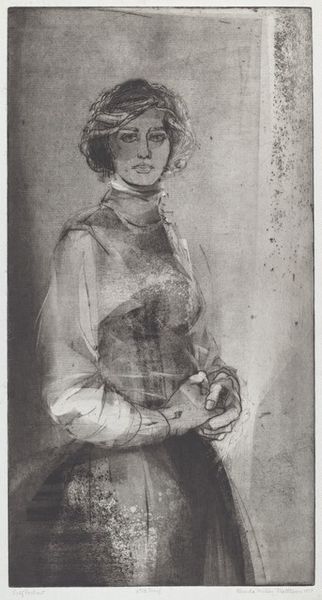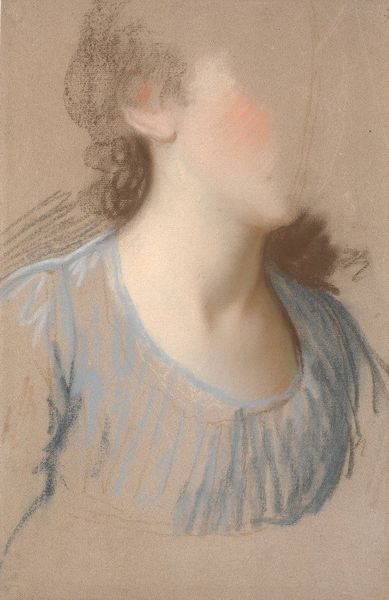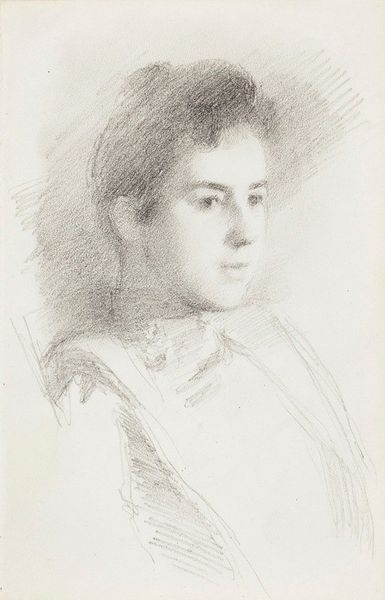
Bust of a Young Woman (recto); Seated Female Figure (verso) 1847 - 1875
0:00
0:00
drawing, print, paper, pencil, chalk, charcoal, black-chalk
#
portrait
#
pencil drawn
#
drawing
# print
#
pencil sketch
#
charcoal drawing
#
paper
#
pencil drawing
#
pencil
#
chalk
#
charcoal
#
academic-art
#
charcoal
#
black-chalk
Dimensions: 254 × 240 mm
Copyright: Public Domain
Curator: Jean-Baptiste Carpeaux's "Bust of a Young Woman," likely created between 1847 and 1875, offers an intriguing study in charcoal, black chalk, and pencil on paper. It's currently held here at The Art Institute of Chicago. Editor: My first impression is one of melancholy. The tenebrism gives her an almost haunting quality, even with the soft, smudged edges. Curator: The artist's masterful use of chiaroscuro is certainly striking. Notice how the subtle gradations of light and shadow model her face, drawing the viewer's eye to specific points, especially around the eyes and mouth. It is worth nothing, the technique he employs reinforces an artistic vocabulary harkening to that of renaissance artists. Editor: There's a classical grace to her profile. Yet, at the same time, something about the loose, almost unfinished quality of the sketch suggests a fleeting moment. Do you think that capturing the ethereal quality in such stark contrasts might also function as a means of speaking to beauty’s ephemerality? Curator: The verso contains an alternative design, so what we are observing may well be a sketch from a sketchbook, this accounts for its feeling. And although this work has representational features there's something particularly evocative in how the artist doesn’t adhere to representing the objective facts, and more-so what is created lies somewhere between pure geometry and abstract gesture. Editor: It’s fascinating to see how Carpeaux's skill gives us both the idealised beauty associated with Neoclassicism and something rawer and emotionally charged. I wonder what that may say of Carpeaux's own romanticism? Curator: Ultimately, I feel this piece exemplifies an ongoing transition between the rigid formalism of Academic Art and a more expressive and intuitive approach to portraiture. It allows the viewer to access Carpeaux's evolving sensibilities as an artist. Editor: It's as if she represents both tradition and transition, suspended in this ephemeral cloud of chalk and charcoal. The tension of both, indeed, remains an artwork in and of itself.
Comments
No comments
Be the first to comment and join the conversation on the ultimate creative platform.
